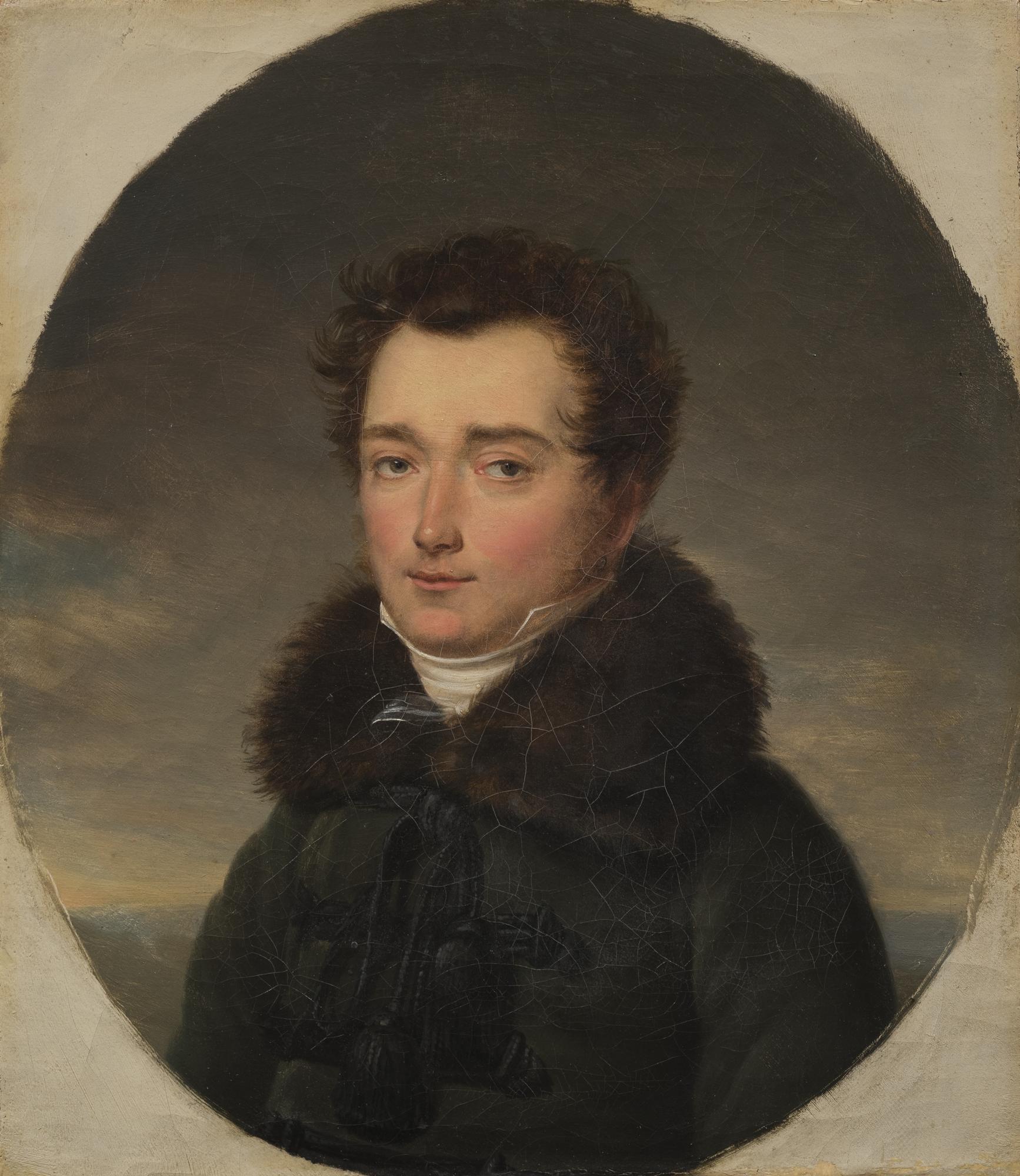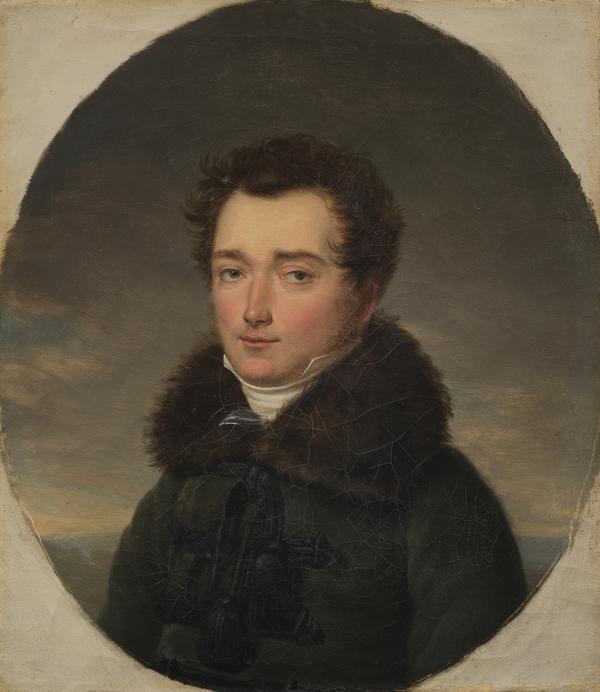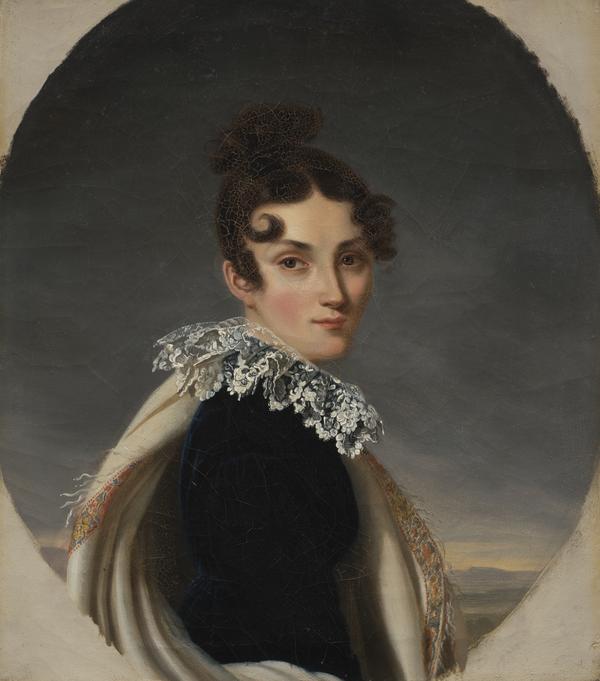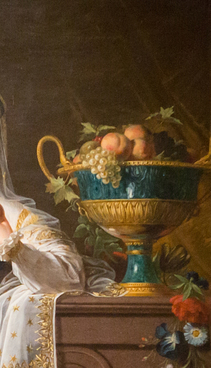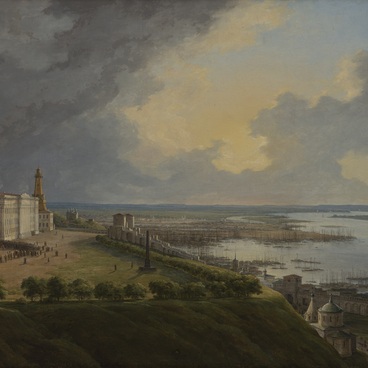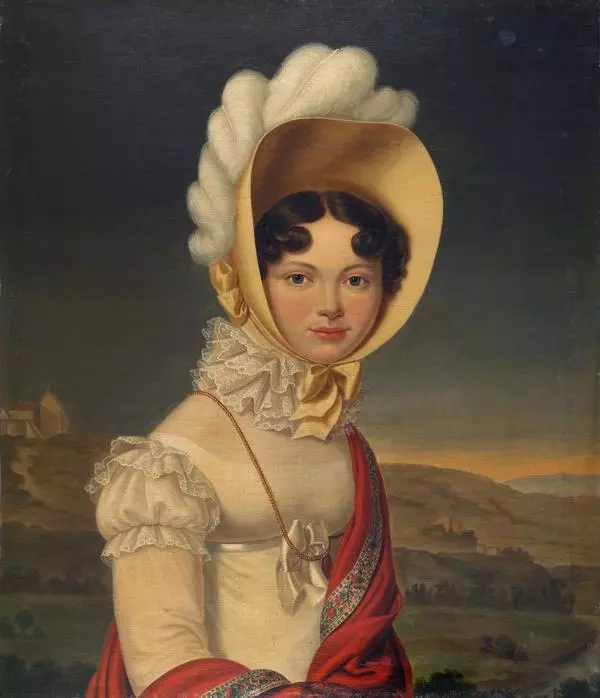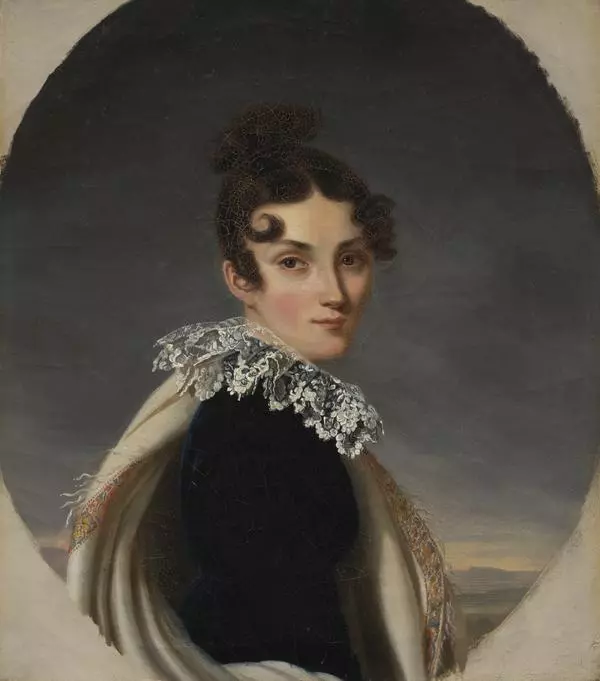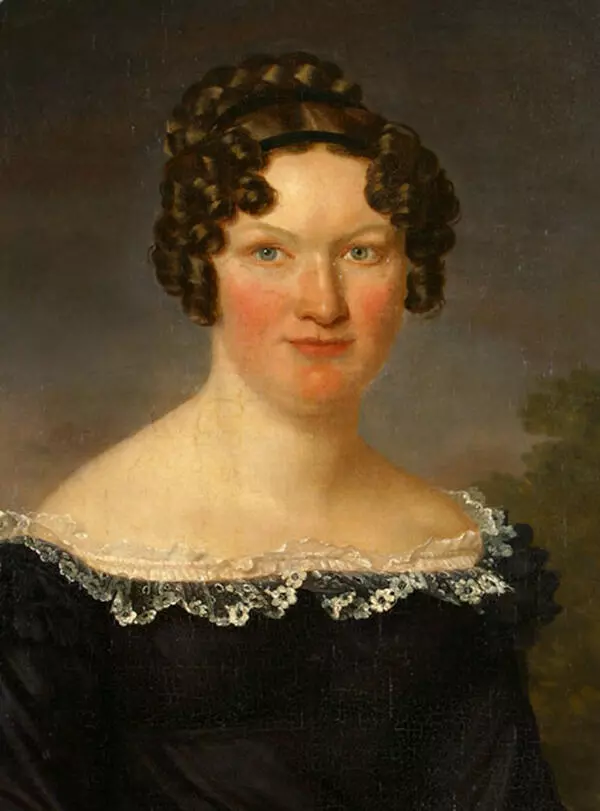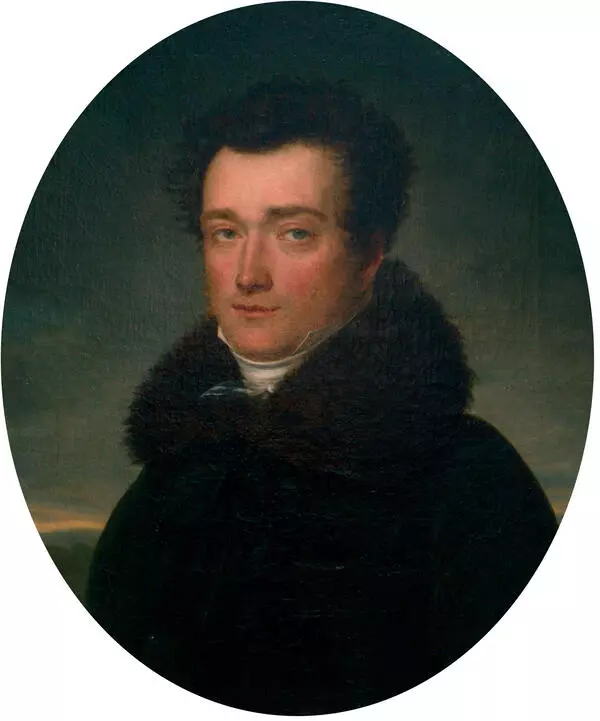Henri-Francois Riesener painted the intimate portrait of Alexander Olsufiev in approximately 1810. It was a companion portrait to the picture of Maria Olsufieva, Alexander’s wife. Alexander married Maria in 1816, but just three years later, she died of consumption at the age of twenty.
1 / 2
Portrait of Olsufiev
Creation period
abt. 1810
Dimensions
30,5x26 cm
Technique
Canvas, oil
Collection
2
Open in app#1
Riesener Henri-Francois
Portrait of Olsufiev
#2
#3
Henri-Francois Riesener. Portrait of Maria Pavlovna Olsufieva, img by: New Jerusalem Museum
In accordance with the traditions of companion portraits, these artworks have the same composition. The characters are presented waist deep, facing each other. Both portraits are oval-shaped with a focus on the figures and the faces of the artist’s models.
#5
The romantic style characteristics are present in both portraits. The author wanted to reflect the character’s emotions, therefore portraying him with a slight blush on his cheeks and dreamy eyes. The figure is presented against the background of a landscape scene. The twilight clouded sky reflects the mood of the picture.
#6
In contrast with grand portraits, where the models were depicted in full gear with decorations and awards, the artist portrayed Olsufiev in simple dark-coloured dolman coat with a fur collar.
#7
The overcoat bears only a faint resemblance to a hussar’s pelisse, in memory of the previous military service of the main character.
#9
In all probability, the companion portraits of the Olsufievs (man and wife) were created by Riesener in 1817, after Alexander resigned his commission. He was praised for service in battle. Olsufiev took part in landmark battles of the 1812 Patriotic War and carried the mortally wounded Petr Bagration from the battle-field to safety in his arms.
After the Patriotic War Olsufiev joined the Ahtirskiy hussar regiment as first lieutenant and took part in military campaigns and battles near Leipzig (Germany), la-Rotiere and Montmirail. The Ahtirskiy hussar regiment suffered great losses in battle and due to that it was re-formed. Olsufiev was posted to the Imperial Guard (Leib Guard) mounted regiment of chasseurs. Olsufiev retired from the military service in 1817 to recover from wounds received in battle. There is a theory that the heroic figure of Olsufiev became the prototype of Pier Bezuhov in Leo Tolstoy’s novel War and Peace.
After the Patriotic War Olsufiev joined the Ahtirskiy hussar regiment as first lieutenant and took part in military campaigns and battles near Leipzig (Germany), la-Rotiere and Montmirail. The Ahtirskiy hussar regiment suffered great losses in battle and due to that it was re-formed. Olsufiev was posted to the Imperial Guard (Leib Guard) mounted regiment of chasseurs. Olsufiev retired from the military service in 1817 to recover from wounds received in battle. There is a theory that the heroic figure of Olsufiev became the prototype of Pier Bezuhov in Leo Tolstoy’s novel War and Peace.
#10
New Jerusalem Museum
read morehide
00:00
00:00
1x
Portrait of Olsufiev
Creation period
abt. 1810
Dimensions
30,5x26 cm
Technique
Canvas, oil
Collection
2
Open in app
Share
